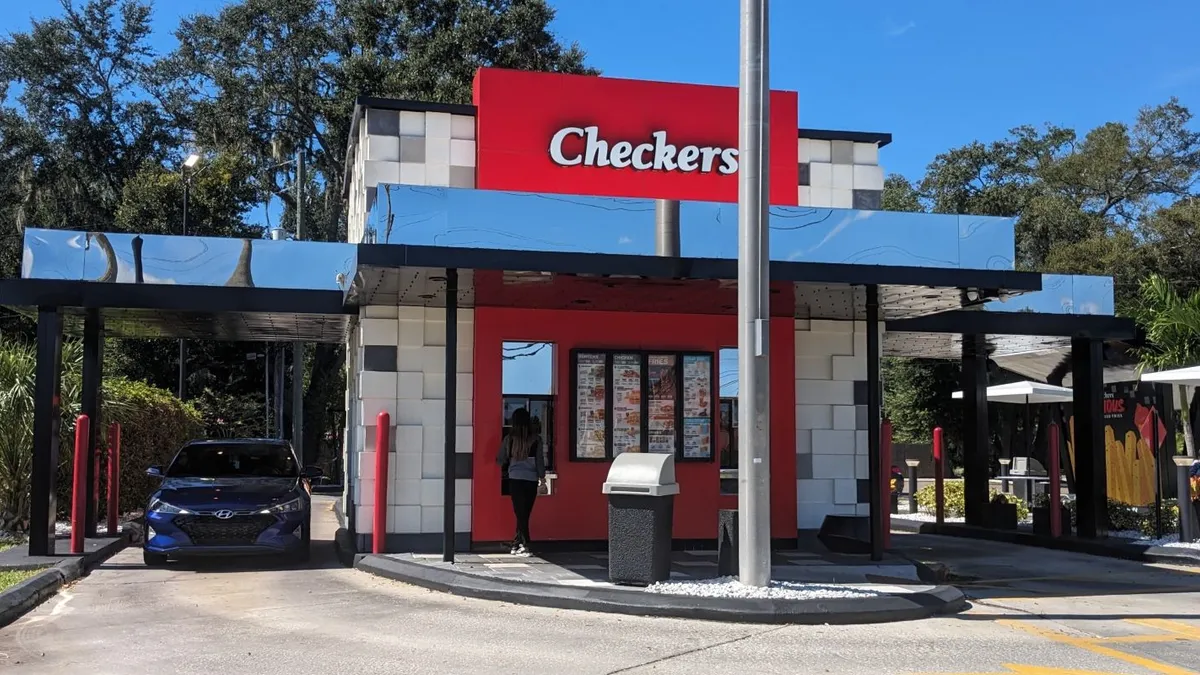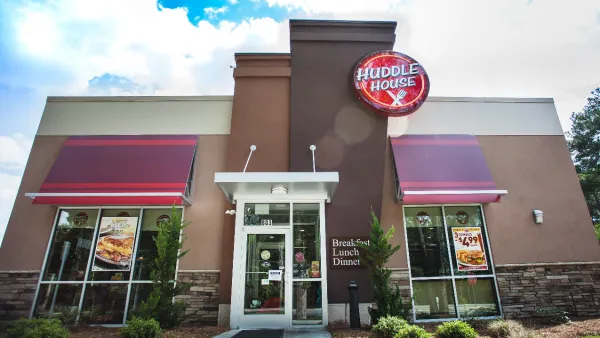Dive Brief:
- Checkers & Rally’s has developed a smaller prototype for its restaurants, reducing construction costs and real estate requirements, according to a press release emailed to Restaurant Dive.
- The prototype is about 570 square feet, much smaller than the chain’s previous 1,008-square-foot locations.
- With high interest rates and construction costs, brands ranging from Famous Dave’s to Potbelly are looking for ways to reduce the investment needed by franchisees.
Dive Insight:
This shift to a smaller store footprint reflects broader industry trends. Just in the last few weeks, Jamba announced a standardized store format that reduced development costs; &pizza standardized its store size to 1,200 square feet as part of a franchising push; and Little General announced it would open several small-format Buffalo Wild Wings “Go” locations in its c-stores.
Checker’s & Rally’s reduced its space by offering the option for a single drive-thru, rather than the chain’s standard double drive-thru. It also includes changes to kitchen layouts to optimize space, such as reducing unused areas and freeing up space by reorganizing storage.
“By streamlining workflows and maximizing the space, the prototype creates a smoother environment that enhances operations and helps staff work more effectively,” the press release states.
Those changes ultimately increased the flexibility of the brand’s real estate needs, the company said.
“By lowering land requirements, cutting construction costs, and enhancing operational efficiencies, we’re creating a model that makes business ownership even more accessible,” Robert Bhagwandat, senior director of franchise development at Checkers & Rally’s, said in the press release.
While prices for equipment and construction materials are particularly volatile at the moment, given the White House’s approach to international trade, the trend towards smaller, modular restaurants goes back years. There is potentially a tradeoff between smaller units and sales, as shrinking kitchens constrain production, but reorganizations of real estate prototypes that avoid crimping kitchen capacity will likely continue apace in the next few years.














